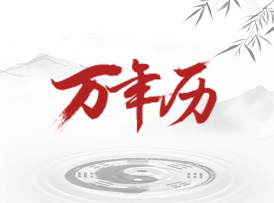盂兰盆节英语怎么说,盂兰盆节用英文怎么说
- 作者: 万年历小编
- 来源:万年历网
- 时间:2024-08-05
每年的农历七月十五日是源出于佛教经典《佛说盂兰盆经》的佛教节日——盂兰盆节,这是一个供佛斋僧、弘扬孝道的节日,在印度、中国、日本和一些东南亚国家盛行。如今的盂兰盆节及其文化也引起了西方人的兴趣,那么今天的老黄历就为你介绍,盂兰盆节英语怎么说。
问:盂兰盆节用英文怎么说?
答:盂兰盆节在英语中一般被称为:Obon Festival,或直接称为Bon Festival
The meaning of Bon Festival
Obon (お盆) or just Bon (盆) is a Japanese Buddhist custom to honor the spirits of one's ancestors. This Buddhist-Confucian custom has evolved into a family reunion holiday during which people return to ancestral family places and visit and clean their ancestors' graves, and when the spirits of ancestors are supposed to revisit the household altars. It has been celebrated in Japan for more than 500 years and traditionally includes a dance, known as Bon-Odori.
The different dates of Bon Festival
The festival of Obon lasts for three days; however its starting date varies within different regions of Japan. When the lunar calendar was changed to the Gregorian calendar at the beginning of the Meiji era, the localities in Japan reacted differently and this resulted in three different times of Obon.
“Shichigatsu Bon” (“Bon in July”) is d on the solar calendar and is celebrated around 15 July in eastern Japan (Kantō region such as Tokyo, Yokohama and the Tōhoku region), coinciding with Chūgen.
“Hachigatsu Bon” (Bon in August) is d on the lunar calendar, is celebrated around the 15th of August and is the most commonly celebrated time.
“Kyū Bon” (Old Bon) is celebrated on the 15th day of the seventh month of the lunar calendar, and so differs each year. “Kyū Bon” is celebrated in areas like the northern part of the Kantō region, Chūgoku region, Shikoku, and the Okinawa Prefecture.
These three days are not listed as public holidays but it is customary that people are given leave.
The allusion of Bon Festival
Obon is a shortened form of Ullambana (Japanese: 于兰盆会 or 盂兰盆会, urabon'e)。 It is Sanskrit for “hanging upside down” and implies great suffering.The Japanese believe they should ameliorate the suffering of the “Urabanna”。
Bon Odori originates from the story of Maha Maudgalyayana (Mokuren), a disciple of the Buddha, who used his supernatural powers to look upon his deceased mother. He discovered she had fallen into the Realm of Hungry Ghosts and was suffering.
Greatly disturbed, he went to the Buddha and asked how he could release his mother from this realm. Buddha instructed him to make offerings to the many Buddhist monks who had just completed their summer retreat, on the fifteenth day of the seventh month.
The disciple did this and, thus, saw his mother's release. He also began to see the true nature of her past selflessness and the many sacrifices that she had made for him.
The disciple, happy because of his mother's release and grateful for his mother's kindness, danced with joy. From this dance of joy comes Bon Odori or “Bon Dance”, a time in which ancestors and their sacrifices are remembered and appreciated.
The traditions of Bon Festival
As Obon occurs in the heat of the summer, participants traditionally wear yukata, or light cotton kimonos. Many Obon celebrations include a huge carnival with rides, games, and summer festival food like watermelon.
Families sent their ancestor's spirits back to their permanent dwelling place under the guidance of fire: this rite was known as sending fire (Okuribi)。 Fire also marks the commencement (Mukaebi) as well as the closing of the festival.
你可能也喜欢:
节日大全:西方传统节日有哪些?
虔诚教徒须知:盂兰盆节供养什么
盂兰盆节吃什么?一日三餐皆是素
盂兰盆节日语怎么说,日本盂兰盆节介绍
展开全文
相关阅读
精彩推荐















